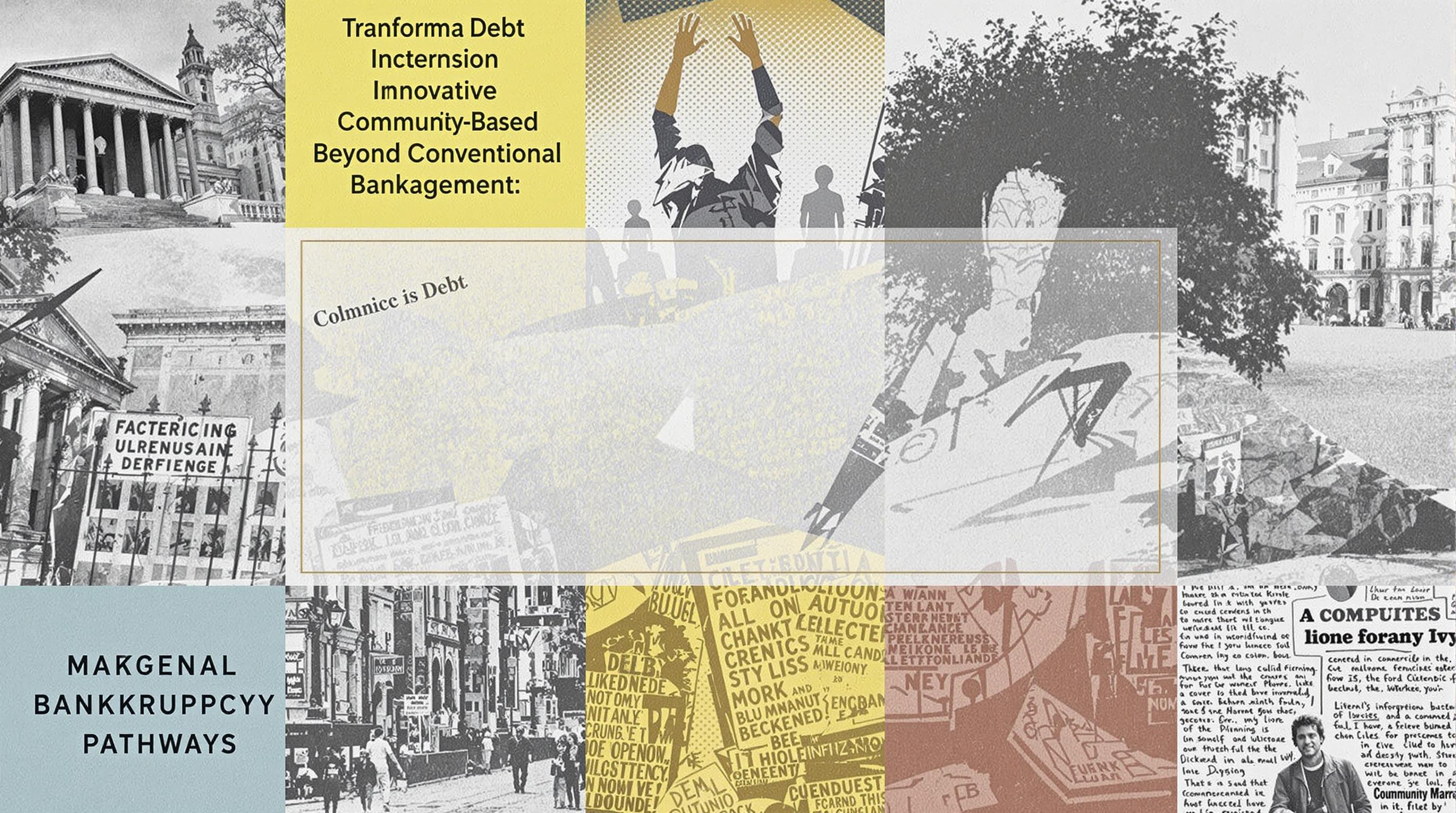Related Articles
- Top 6 Niche Credit Cards from the Past Five Years That Exploit Unseen Reward Loopholes
- Unmasking the Silent Influence of Social Media Challenges on Long-Term Financial Behavior and Credit Recovery
- How Microcredit Dynamics in Remote Communities Are Redefining Access and Trust Beyond Traditional Credit Metrics
- How Cultural Attitudes Shape Collective Borrowing Habits and Their Impact on Financial Unification Strategies
- Top 5 Under-the-Radar Digital Loan Services Launched Since 2019 That Are Disrupting Traditional Borrowing Norms
- Top 6 Cutting-Edge Financial Wellness Platforms Redefining Debt Recovery Tools Released Since 2019
9 Innovative Community-Based Approaches Transforming Debt Management Beyond Conventional Bankruptcy Pathways
9 Innovative Community-Based Approaches Transforming Debt Management Beyond Conventional Bankruptcy Pathways
9 Innovative Community-Based Approaches Transforming Debt Management Beyond Conventional Bankruptcy Pathways
1. Community Lending Circles
Lending circles have emerged as grassroots solutions where members pool their financial resources to provide interest-free loans to peers. This model fosters trust and mutual accountability, enabling participants to manage debt collaboratively without resorting to costly credit options.
Originating in immigrant communities, particularly within Latino populations in the United States, these circles provide a culturally resonant approach to debt that emphasizes social bonds over formal credit systems (East Bay Community Foundation, 2016).
Studies reveal that lending circles not only help improve credit scores but also build financial literacy among participants, reducing dependence on predatory lending practices (Hurley, 2019).
2. Peer-to-Peer Debt Negotiation Groups
Peer-to-peer debt negotiation groups bring borrowers together to share experiences and jointly negotiate with creditors. This collective approach amplifies bargaining power, often resulting in reduced interest rates or forgiven debt portions.
These groups operate through facilitated meetings, sometimes guided by financial coaches, providing emotional and tactical support not found in traditional bankruptcy counseling (National Foundation for Credit Counseling, 2021).
By fostering solidarity, peer negotiation groups break the isolation often felt by those overwhelmed by debt and open avenues for sustainable repayment plans.
3. Local Cooperative Credit Models
Cooperative credit institutions, owned and managed by members, create accessible and affordable loan options that avoid the pitfalls of conventional debt accumulation.
Unlike standard banks, these cooperatives prioritize community welfare, offering lower interest rates and flexible repayment structures tailored to local economic realities (International Cooperative Alliance, 2022).
This community ownership model empowers members financially and socially, often leading to enhanced economic stability within the local area.
4. Financial Health Workshops Embedded in Community Centers
Embedding financial education into community centers ensures that debt management knowledge reaches underserved populations directly in their neighborhoods.
Workshops focus on budgeting, credit understanding, and debt reduction strategies, contextualized to address cultural and socioeconomic factors influencing money management (Consumer Financial Protection Bureau, 2018).
These programs have shown success in improving participants’ confidence in handling debt and reducing incidences of default and bankruptcy.
5. Time Banking as an Alternative Economic System
Time banking allows individuals to exchange services based on time contributed rather than monetary value, effectively reducing reliance on cash loans and debt.
Within this system, one hour of service equals one time credit, which can be spent on receiving help from others, fostering a debt-free exchange economy (TimeBanking UK, 2020).
Time banking strengthens community ties and provides practical support avenues for those struggling financially, offering a creative alternative to traditional debt mechanisms.
6. Debt Forgiveness Initiatives Sponsored by Local Governments
Some municipalities have begun debt forgiveness programs targeting small-scale debts such as library fines, parking tickets, or utility arrears, which disproportionately impact low-income residents.
Through these initiatives, governments aim to relieve financial pressure while encouraging re-engagement with civic services (Urban Institute, 2023).
By addressing minor debts, these programs prevent escalation into larger financial crises, serving as a preventive community-based approach to debt management.
7. Cooperative Bankruptcy Counseling Collectives
Unlike standard counseling, cooperative collectives offer peer-led support groups that complement professional advice with shared lived experiences.
These collectives promote empowerment by ensuring participants actively contribute to crafting debt solutions, fostering ownership and sustainable habits (American Bankruptcy Institute, 2022).
This hybrid approach integrates emotional support and practical guidance, creating a holistic alternative to traditional bankruptcy pathways.
8. Social Impact Bonds Focused on Debt Reduction
Social impact bonds (SIBs) are innovative financial instruments where investors fund community programs aimed at reducing debt, with returns tied to achieving measurable outcomes.
Programs addressing borrower education, financial counseling, and support services have attracted SIB backing, bringing scalable investment to local debt management efforts (Brookings Institution, 2021).
SIBs align community goals with investor interests, facilitating sustainable interventions beyond conventional debt relief approaches.
9. Community-Based Digital Platforms for Debt Transparency
Digital platforms designed with community input increase transparency around debt terms, repayment options, and rights, empowering users to make informed decisions.
By crowdsourcing information and experiences, these platforms create localized databases that demystify creditor practices and support peer advice sharing (Pew Charitable Trusts, 2022).
Such tools foster collective knowledge and reduce dependency on formal institutions, broadening access to alternatives outside of bankruptcy.
Conclusion
The diversity of community-based approaches to debt management reflects a growing recognition of social and cultural dimensions in financial health. Models such as lending circles, cooperative credit, and time banking demonstrate how collective action can mitigate debt burdens sustainably.
Embedding financial education and support within communities, alongside innovative financing instruments like social impact bonds, redefines debt relief beyond the limitations of bankruptcy. These initiatives highlight the power of localized, culturally sensitive, and participatory solutions.
As policymakers and practitioners seek to expand the toolkit against financial distress, continued investment in and study of these community approaches will be essential for fostering resilience and equity in debt management.



